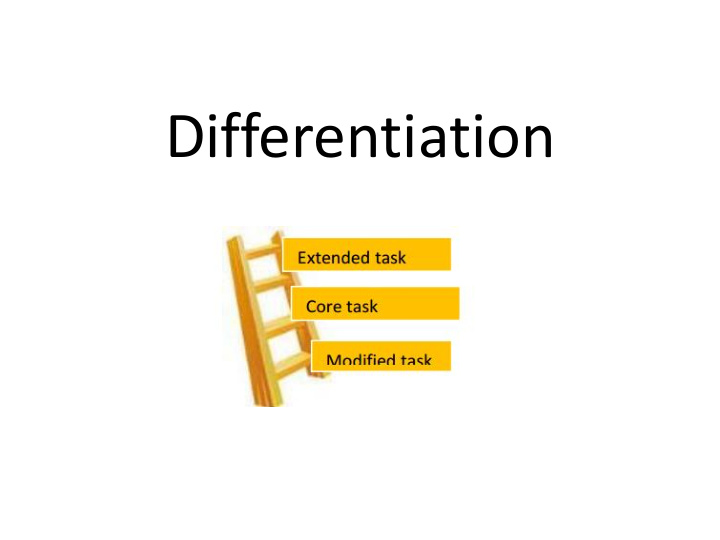



Differentiation
Differentiation stems from beliefs about differences among learners, how they learn, learning preferences and individual interests. Therefore, differentiation is an organized, yet flexible way of proactively adjusting teaching and learning methods to accommodate each child's learning needs and preferences in order to achieve his or her maximum growth as a learner. Anderson (from Wikipe)
Differentiated instruction is not a checklist of strategies but a philosophical approach to teaching all students. Carol Ann Tomlinson
The starting point Knowing your students The biggest mistake in teaching is to treat all children as if they were variants of the same individual and thus to feel justified in teaching them all the same subjects in the same way. H. Gardner
Differences among students • Language level • Learning rate • Cognitive ability • Learning style preference • Ability to and way to communicate • Motivation attitude effort • Interests ~ Strengths ~Talents • Gender • Ethnicity Culture Background
Goals of Differentiation • Academic achievement - in a CLIL context in subject area and in FL • Challenge level for achieving students • Support struggling students • Increase interest in and excitement about learning • Increase student confidence in own learning ability
In terms of differentiating for ability, Extension Activities • To learn more about the topic • To accommodate learners’ interests • To share a personal experience – to personalise the learning • To learn about a related topic • To relate to current events • To relate to historical events • To transfer or apply new learning (to make connections) • To investigate career opportunities • To increase intrinsic motivation for learning
Ways to differentiate learning
Your task …. In groups Prepare TWO differentiated tasks: 1. About something you have seen / learnt about here in Ireland 2. About your subject area which you will be able to use with a group of your students
Recommend
More recommend